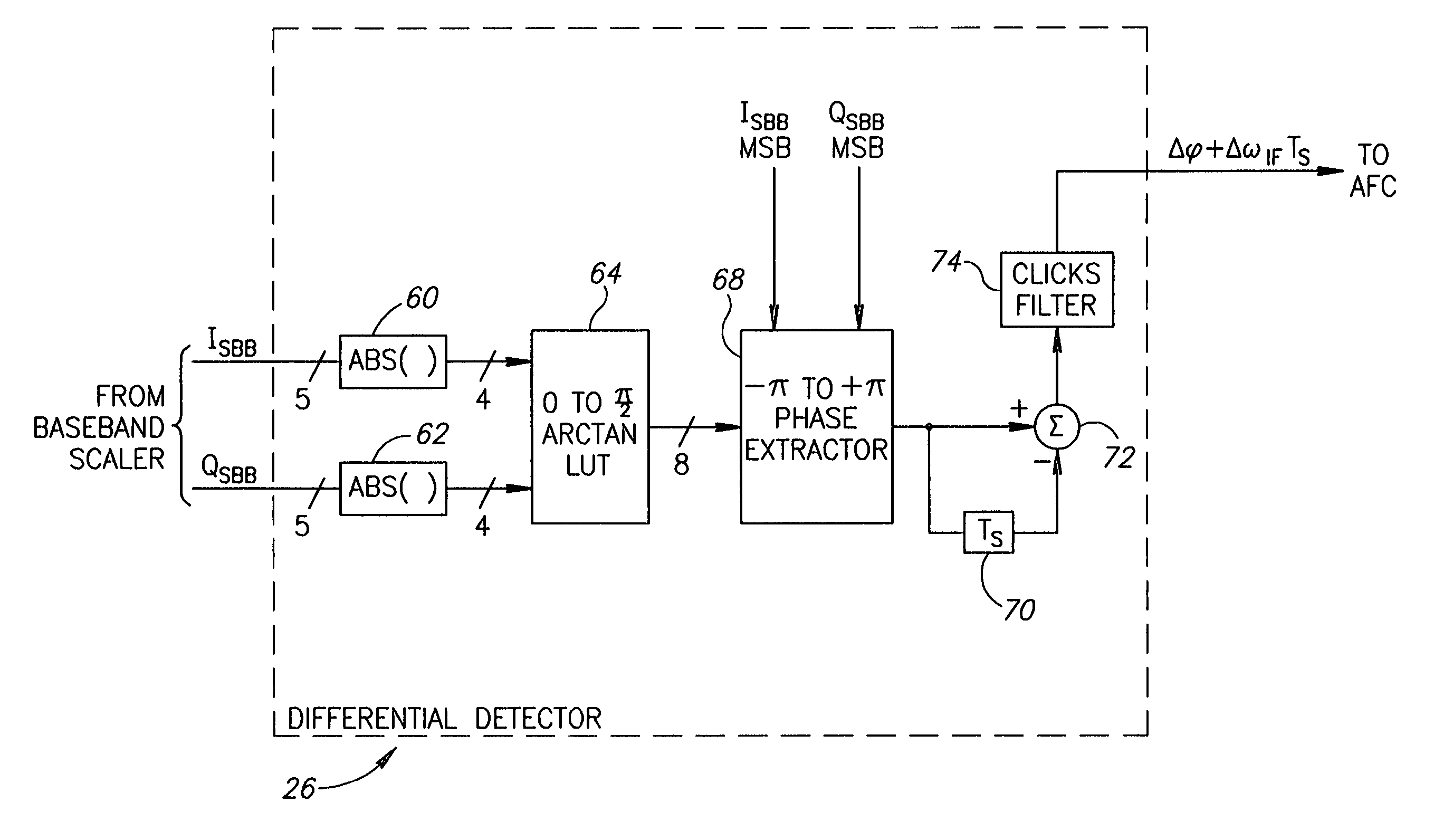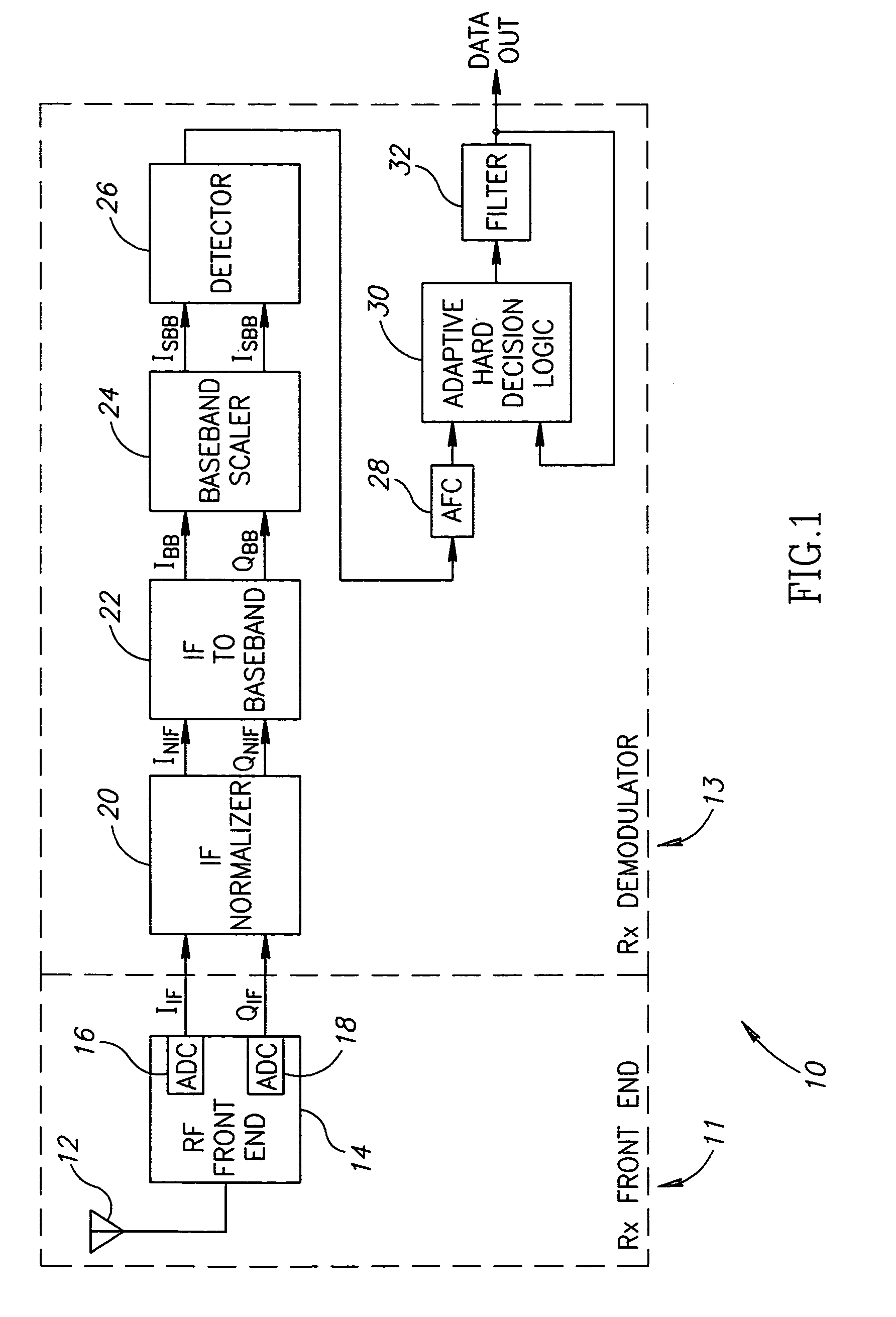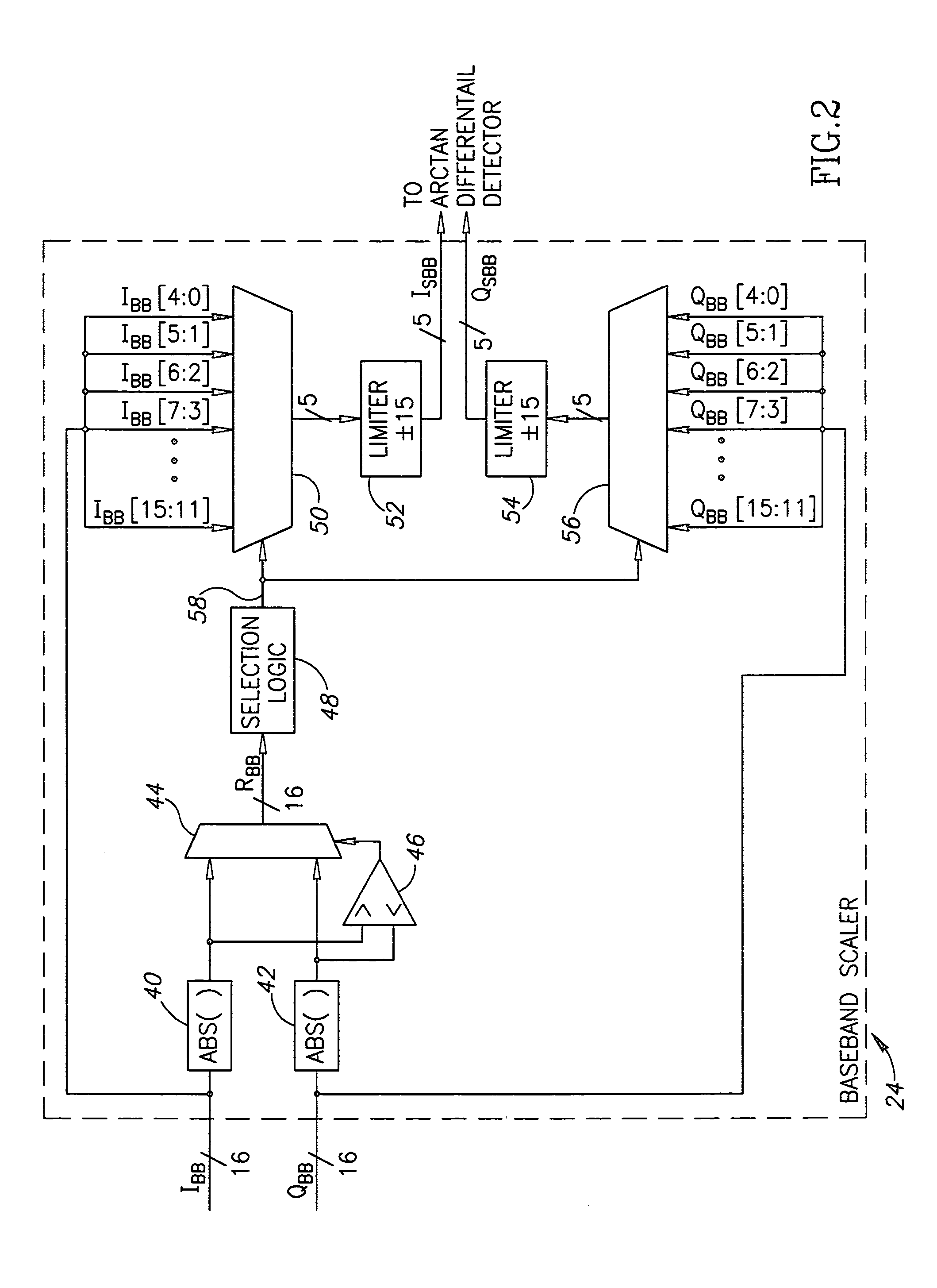Gaussian frequency shift keying digital demodulator
- Summary
- Abstract
- Description
- Claims
- Application Information
AI Technical Summary
Benefits of technology
Problems solved by technology
Method used
Image
Examples
Embodiment Construction
Notation Used Throughout
[0036]The following notation is used throughout this document.
[0037]
TermDefinitionAFCAutomatic Frequency ControlAHDLAdaptive Hard Decision LogicASICApplication Specific Integrated CircuitAWGNAdditive White Gaussian NoiseBERBit Error RateDCDirect CurrentFPGAField Programmable Gate ArrayFSKFrequency Shift KeyingGFSKGaussian Frequency Shift KeyingHDLHardware Description LanguageIFIntermediate FrequencyISIIntersymbol InterferenceLOLocal OscillatorLSBLeast Significant BitLUTLook-Up TableMSBMost Significant BitRAMRandom Access MemoryROMRead Only MemoryRFRadio Frequency
Detailed Description of the Invention
[0038]The mechanism of the present invention is based on extracting phase differences directly from the I and Q signals after downconversion to zero-IF and image rejection are performed. The phase Φ represented by the quadrature I and Q signals is determined using the relationship
[0039]φ=arctan(QI).
A lookup table stores the values of the arctan function preferably...
PUM
 Login to View More
Login to View More Abstract
Description
Claims
Application Information
 Login to View More
Login to View More - R&D
- Intellectual Property
- Life Sciences
- Materials
- Tech Scout
- Unparalleled Data Quality
- Higher Quality Content
- 60% Fewer Hallucinations
Browse by: Latest US Patents, China's latest patents, Technical Efficacy Thesaurus, Application Domain, Technology Topic, Popular Technical Reports.
© 2025 PatSnap. All rights reserved.Legal|Privacy policy|Modern Slavery Act Transparency Statement|Sitemap|About US| Contact US: help@patsnap.com



